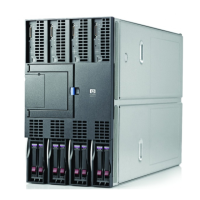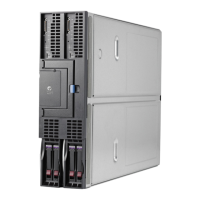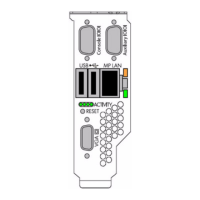Table 4-2 802.1Q Tagged Heartbeat Frame Format (continued)
6 bytes“MAC address of Teamed port”Source MAC address
4 bytes“Value of VLAN ID and Priority”802.1Q/p tag
2 bytes66Length
1 byte0xAADSAP
1 byte0xAASSAP
1 byteUnnumbered, TESTSNAP type
63 bytes“Teaming Proprietary data”Data
4 bytes“Varies”FCS
Advanced Redundancy Mechanisms
Active Path
Active Path is a mechanism used by HP Integrity Network Adapter Teaming to intelligently and
proactively determine which teamed ports should or should not be used by the team based on
“tested” connectivity with an external network device called an Echo Node. Each teamed port
tests connectivity to the Echo Node by transmitting a frame to the Echo Node and monitoring
for a response. Active Path can determine if teamed ports have become segregated onto different
networks (for example, because of link loss on an upstream switch uplink, server network adapter
ports connected to the wrong switch ports, VLAN misconfiguration on a switch, etc.). Teamed
port segregation is determined based on successful communication with the Echo Node on a per
teamed port basis.
Active Path’s goals:
• To determine if the teamed ports have become segregated into different broadcast domains
(in other words, teamed ports pass or fail the connectivity test with the Echo Node)
• To only use teamed ports with validated connectivity to the Echo Node for server data
communication
Active Path is considered an “active” mechanism because it actively transmits and receives a
specific type of frame between teamed ports and an external network device called the Echo
Node. Active Path uses the results of its connectivity tests to intelligently make decisions to meet
the goals above.
As discussed earlier, the basic redundancy mechanisms used by HP Integrity Network Adapter
Teaming are as follows:
• Link loss detection – “Do I have physical link?”
• Transmit path validation heartbeats – “Can I successfully transmit a frame onto the network?”
• Receive path validation heartbeats – “Can I successfully receive any kind of frame from the
network?”
These basic mechanisms do not provide for redundancy beyond the network adapter port in the
team. In other words, these basic redundancy mechanisms have no ability to detect network
conditions that would prevent a particular team member port from being used by the team. If
one teamed port is isolated from the rest of the team on another network, the isolated teamed
port would most likely pass all three of the basic redundancy mechanisms tests: a) it would have
link, b) it could successfully transmit heartbeat frame (it doesn’t care if another team member
receives it or not), and c) it could receive any kind of broadcast frame that may be transmitted
on the isolated segment (from another network device). As a result, the basic redundancy
mechanisms don’t provide for intelligently choosing which teamed ports to use or not to use.
For example, refer to the diagram of an NFT team in Figure 4-4. The HP Integrity server’s Primary
team member port is connected to Switch A. Switch A’s uplink to the Core Switch has been
Types of HP Integrity Network Adapter Teams 37

